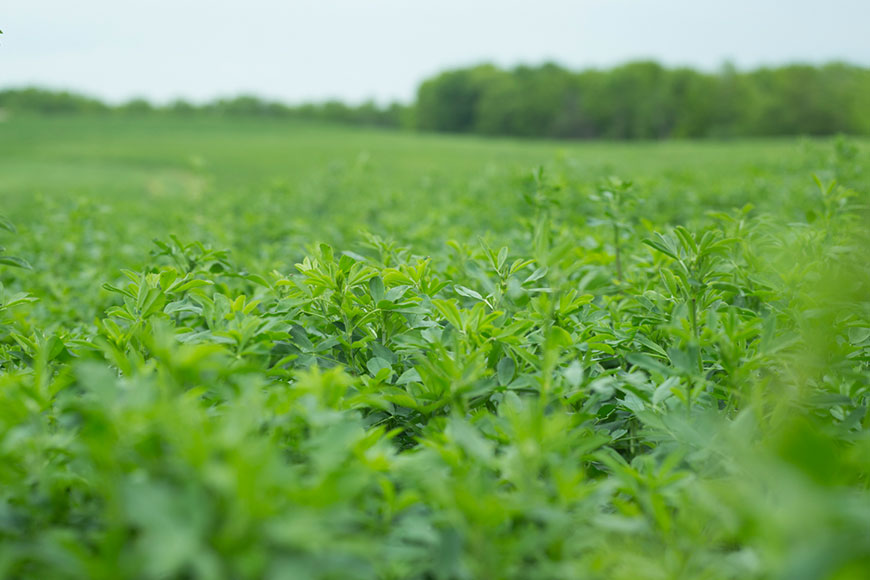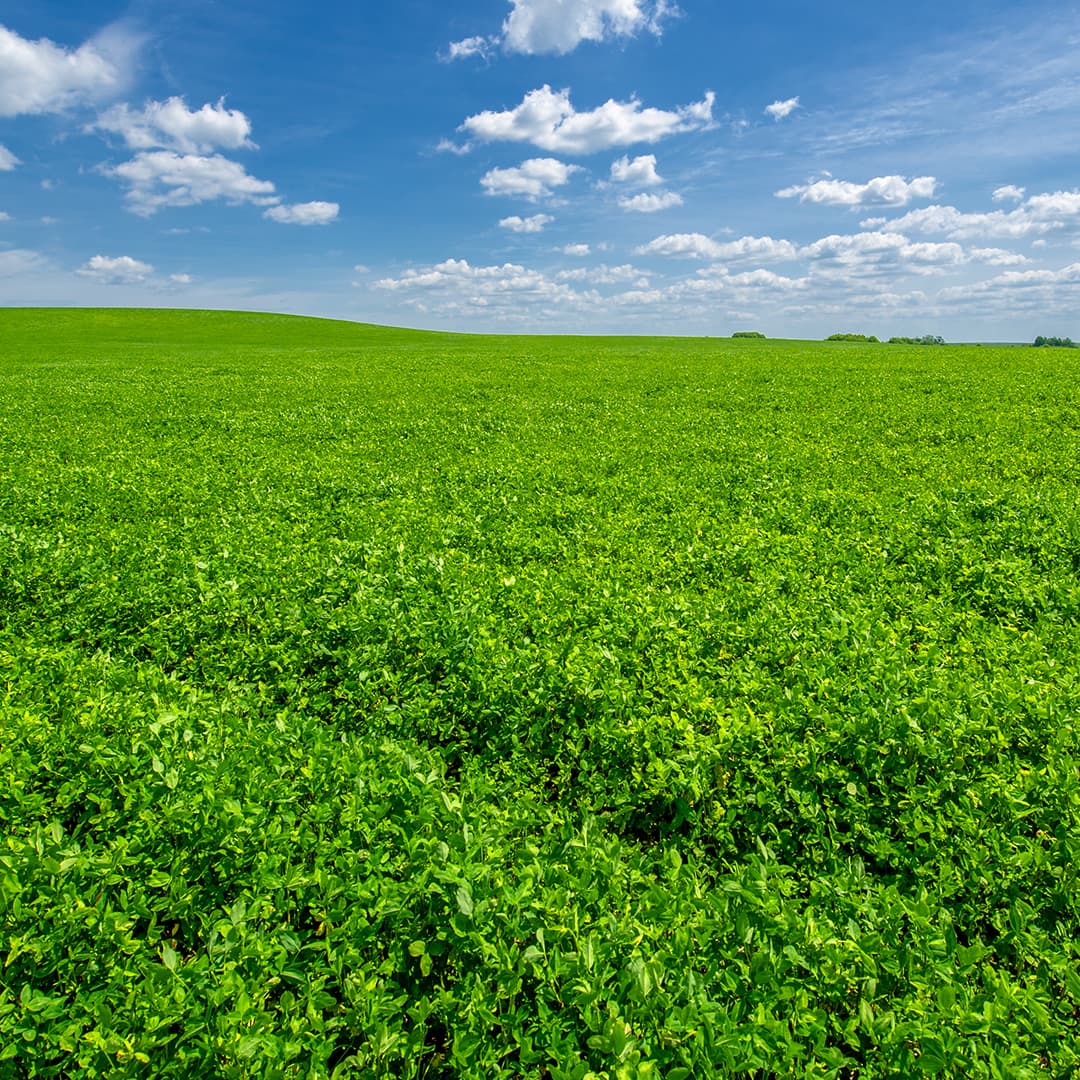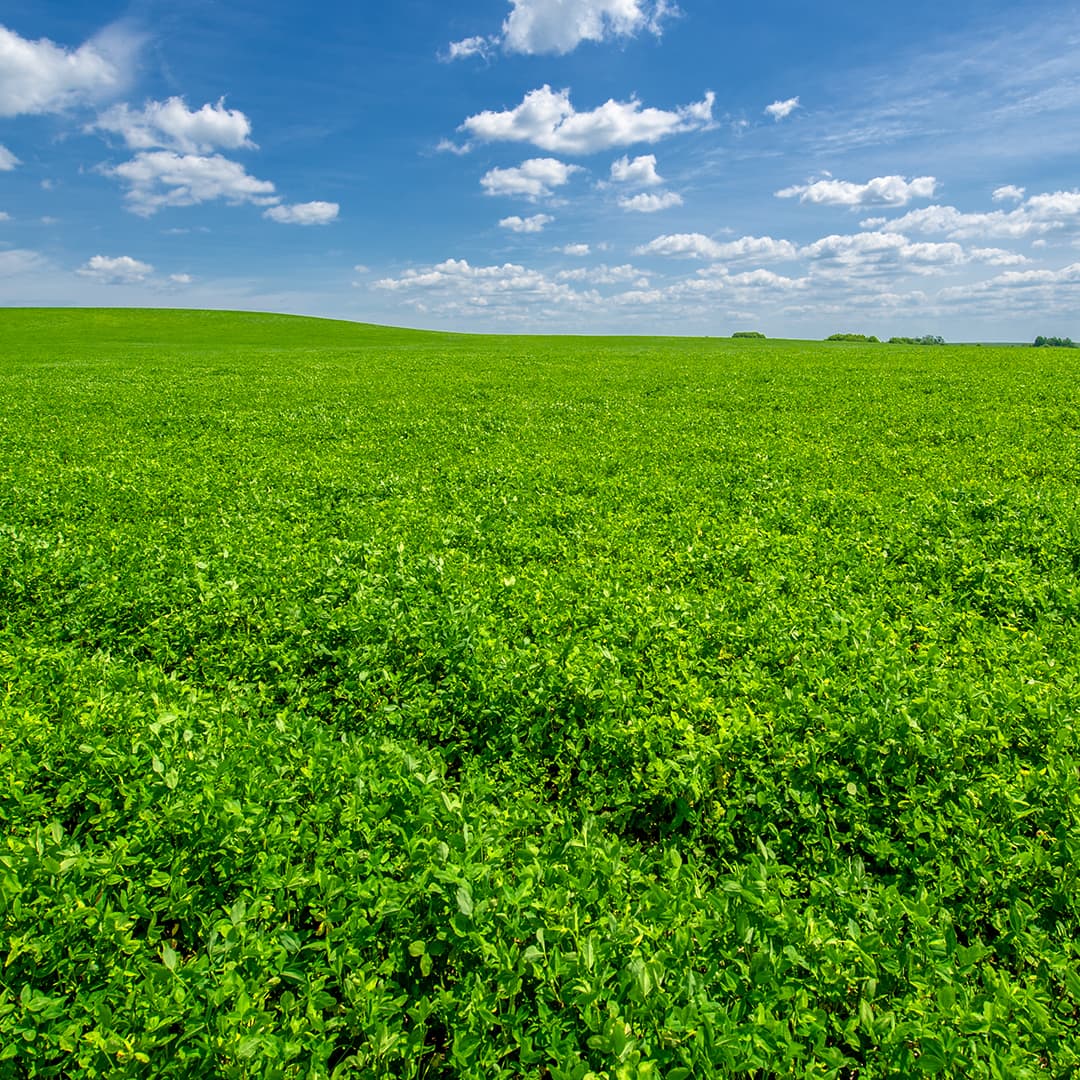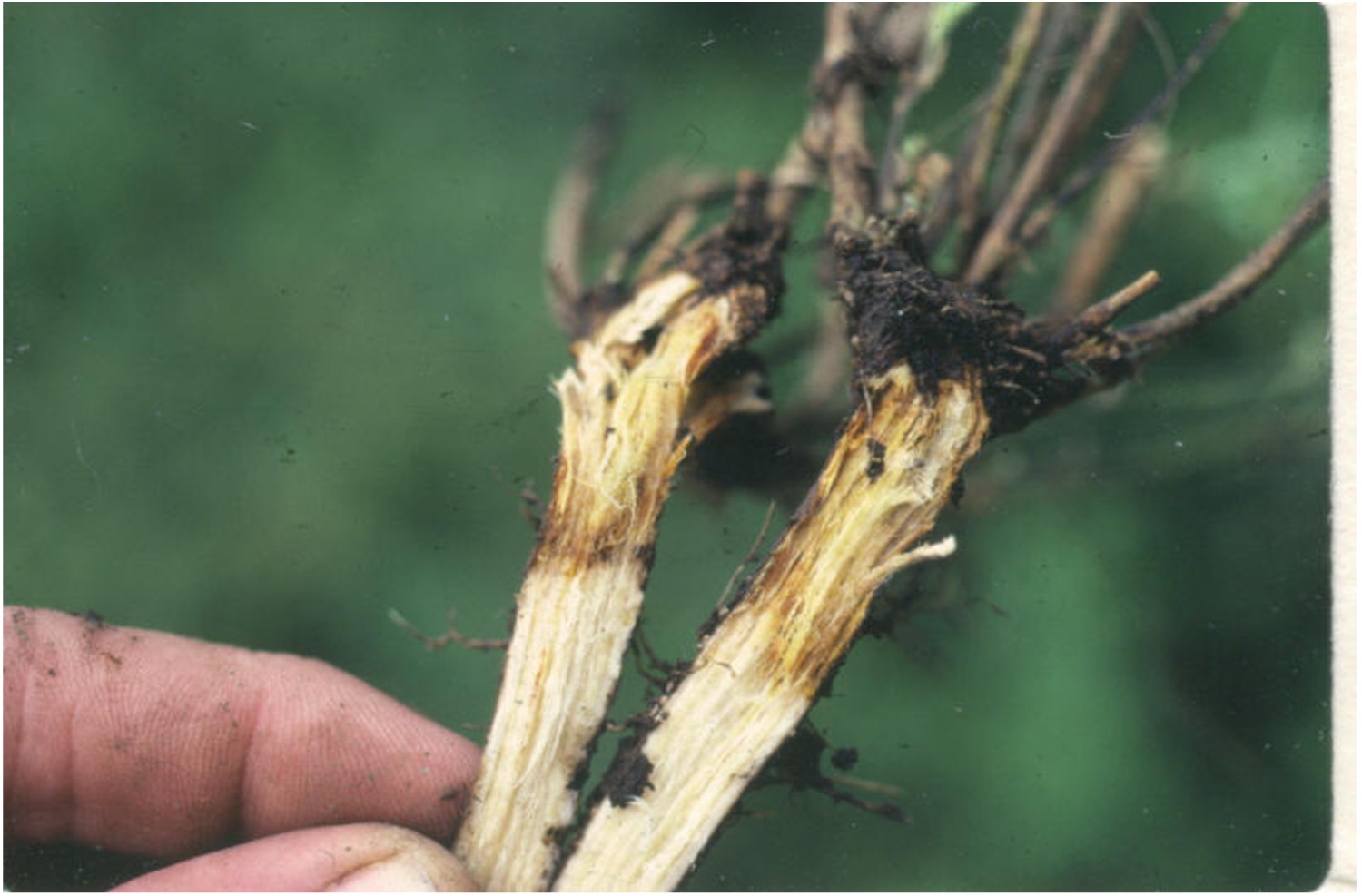Winter annual weeds germinate in the fall, overwinter in the vegetative stage, flower and set seed in early spring, and then die out during the hot summer months. They can be a problem in alfalfa because they grow at cooler temperatures than alfalfa, so they start growing earlier in the spring than alfalfa.
We want to control winter annual weeds because:
Check your fields in the fall to see if you find winter annual weed situations heavy enough to significantly interfere with yield and quality of the overall forage. If so, spray fields before soils freeze. Fall control is often recommended, especially with conventional alfalfa, because spring spraying must occur before alfalfa greens up and alfalfa plants would be injured. Usually, there are only a few days in spring where alfalfa is dormant, weeds are actively growing, and it's not too wet or windy.
For conventional alfalfa three herbicides to use now are Sencor, Sinbar and Velpar. All three do an excellent job of controlling pennycress, tansy mustard, shepard's purse, and downy brome. Both Velpar and Velpar AlfaMax should only be applied to established alfalfa stands during the dormancy period. Raptor may be a better choice if henbit is your biggest problem. Velpar is the better choice for dandelion control.
Raptor and Pursuit are registered for post-emergent winter annual weed control in alfalfa. Applications are usually applied through March. Both products are labeled for fall and spring seeded alfalfa, as well as established stands.
Roundup Ready® alfalfa varieties have made herbicide treatment of winter annual weeds much easier. Roundup can be applied in either the fall or spring if winter annual weeds are present. Fall applied herbicide applications should be made when daytime air temperatures are 50oF or higher.
Best results with Roundup occur when it is applied after weeds emerge but before alfalfa growth in the spring interferes with spray coverage of target weeds. If applying in the spring and frosts (32oF or less) are still occurring, it is best to use a low rate of roundup (22 ounces per acre of Roundup PowerMax) and apply before alfalfa is 4 inches tall.
Wild onion and wild garlic can be controlled with Roundup on Roundup-Ready alfalfa. Use Roundup in the early fall when either of these weeds first become visible. A second application in the spring may be needed for control.
However, as with any herbicide application, target plant size is important. Label guidelines recommend treatment of weeds before they exceed 4” height. Additionally, it is important to make applications before the alfalfa canopy begins interfering with spray pattern and distribution of product. Also note that not all glyphosate products may be labeled for use in alfalfa.
We want to control winter annual weeds because:
- They can compete against the alfalfa and reduce yield.
- They can, in some cases, thin the alfalfa stand.
- Some have a higher moisture content than alfalfa and may delay drying for hay.
- Many have a lower feed value than alfalfa.
- Some have low palatability or are poisonous to livestock. Weeds having low to moderate toxicity include yellow rocket, field pennycress, henbit, purple deadnettle, and curly dock. Cressleaf groundsel is the most poisonous weed to have in an alfalfa field and is becoming more prevalent, especially in western Ohio.
Check your fields in the fall to see if you find winter annual weed situations heavy enough to significantly interfere with yield and quality of the overall forage. If so, spray fields before soils freeze. Fall control is often recommended, especially with conventional alfalfa, because spring spraying must occur before alfalfa greens up and alfalfa plants would be injured. Usually, there are only a few days in spring where alfalfa is dormant, weeds are actively growing, and it's not too wet or windy.
For conventional alfalfa three herbicides to use now are Sencor, Sinbar and Velpar. All three do an excellent job of controlling pennycress, tansy mustard, shepard's purse, and downy brome. Both Velpar and Velpar AlfaMax should only be applied to established alfalfa stands during the dormancy period. Raptor may be a better choice if henbit is your biggest problem. Velpar is the better choice for dandelion control.
Raptor and Pursuit are registered for post-emergent winter annual weed control in alfalfa. Applications are usually applied through March. Both products are labeled for fall and spring seeded alfalfa, as well as established stands.
Roundup Ready® alfalfa varieties have made herbicide treatment of winter annual weeds much easier. Roundup can be applied in either the fall or spring if winter annual weeds are present. Fall applied herbicide applications should be made when daytime air temperatures are 50oF or higher.
Best results with Roundup occur when it is applied after weeds emerge but before alfalfa growth in the spring interferes with spray coverage of target weeds. If applying in the spring and frosts (32oF or less) are still occurring, it is best to use a low rate of roundup (22 ounces per acre of Roundup PowerMax) and apply before alfalfa is 4 inches tall.
Wild onion and wild garlic can be controlled with Roundup on Roundup-Ready alfalfa. Use Roundup in the early fall when either of these weeds first become visible. A second application in the spring may be needed for control.
However, as with any herbicide application, target plant size is important. Label guidelines recommend treatment of weeds before they exceed 4” height. Additionally, it is important to make applications before the alfalfa canopy begins interfering with spray pattern and distribution of product. Also note that not all glyphosate products may be labeled for use in alfalfa.



